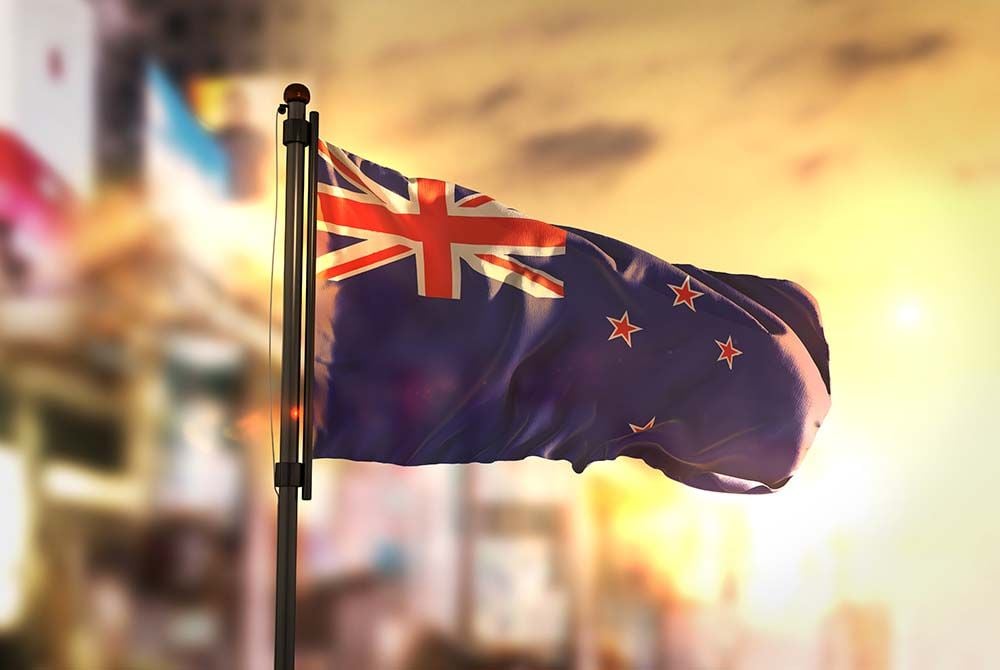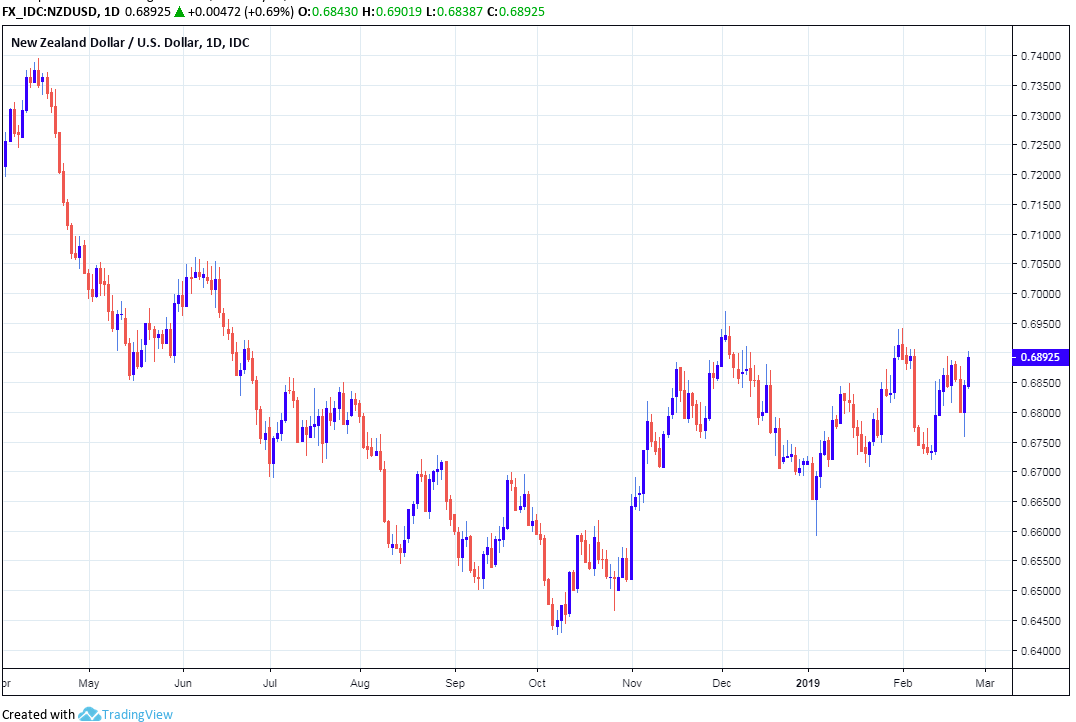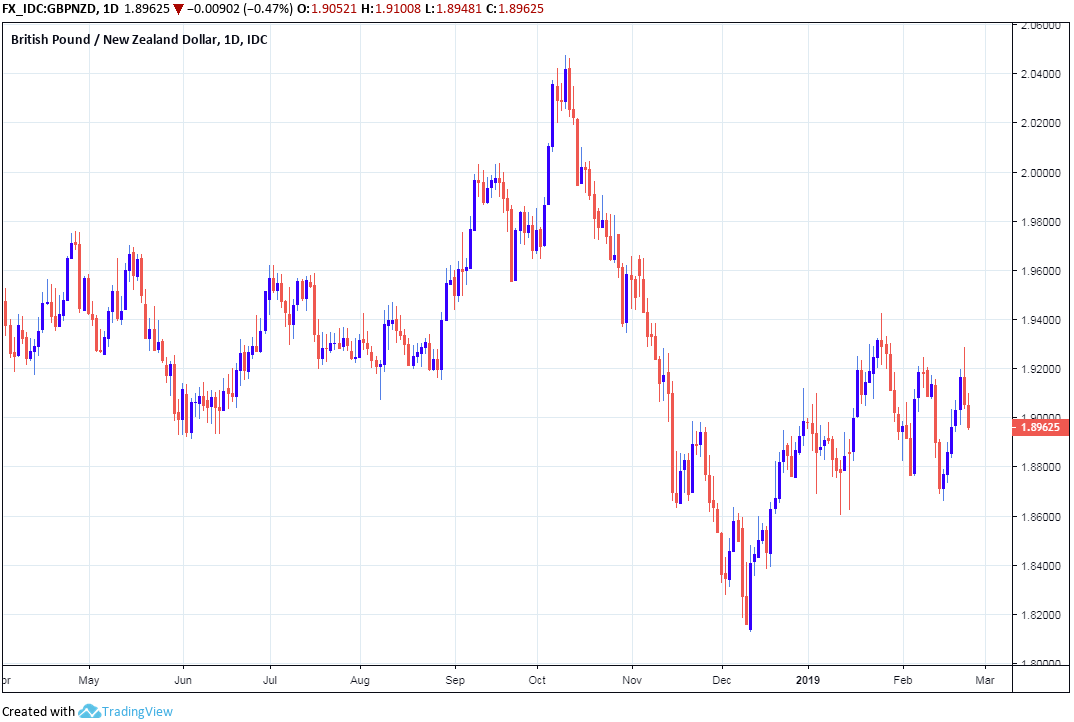The New Zealand Dollar: Retail Sales Surprise Not Enough to Prevent an RBNZ Interest Rate Cut in 2019
- Written by: James Skinner

© Natanael Ginting, Adobe Stock
- NZD retail sales surge in Q4 but not enough to prevent rate cut.
- As retail sales alone won't prevent weak final quarter GDP figure.
- Ensuring market continues to bet on an RBNZ rate cut this year.
The New Zealand Dollar was buoyed on Monday by a strong retail sales number for the final quarter of 2018, which comes just weeks ahead of crunch GDP growth figures due out in March that may be pivotal to whether the Reserve Bank of New Zealand (RBNZ) cuts its interest rate this year.
RBNZ deputy governor Geoff Bascand said last week that a rate cut could be necessary in order to offset the constrictive impact that plans to increase bank capital buffers may have on financial conditions within the economy.
The RBNZ warned several times in 2018 that it could cut rates if growth didn't pick up in the second half of the year and since then, if anything, most of the incoming data has pointed toward a further loss of momentum in the economy.
Third quarter GDP growth was its weakest for four years and unemployment rose by nearly 9% during the final quarter of 2018, setting a sombre scene for the Kiwi currency early in the New Year. Now, much depends on the final quarter GDP reading due on March 22 and what the RBNZ does next.
"Strong growth in total and core retail trade volumes point to a bumper Xmas for retailers, although we still expect a sluggish outturn for Q4 GDP, which should keep the risk profile tilted in favour of a lower official cash rate," says Nick Tuffley, chief economist at ASB Bank.
Retail sales rose by a blockbuster 1.7% in the final quarter of last year, up from 0.5% previously, while Statistics New Zealand also revised its estimate of third-quarter sales up from 0% to 0.3%.
Markets had looked for sales growth of just 0.5% in the final quarter so Monday's outcome was a significant positive surprise for both the economy and New Zealand Dollar.
Core retail sales growth was even higher than the headline numbers suggests, at 2% for the quarter, which is up from an upwardly-revised 0.7% in the previous quarter and ahead of the consensus for a reading of 0.8%.
The core number excludes sales of large ticket items like cars from the data because of the distorting impact they have on underlying trends in spending. It also ignores sales of gasoline at filling stations, which can fluctuate significantly with volatility in the market price of oil.
"Stronger than expected Q4 spending result does add a little upside risk to our forecast for GDP growth over the December quarter. However, we’re still left with a picture of an economy that lost some steam over the back half of last year, and growth still looks set to undershoot the RBNZ’s forecasts for 0.8% GDP growth," says Satish Ranchhod, an economist at Westpac.
Currency markets care about the retail and GDP data because economic growth has a direct bearing on inflation and it is changes in consumer price pressures that central banks are attempting to manipulate when they tinker with interest rates, which are themselves the raison d'être for most swings in exchange rates.
"Our ASB colleagues expect a sluggish Q4 GDP report because business confidence remains weak. As such, New Zealand interest rate futures will continue to price-in the probability of an OCR cut which will limit NZD upside," says Elias Haddad, a strategist at Commonwealth Bank of Australia.

Above: NZD/USD rate shown at daily intervals.
The NZD/USD rate was quoted 0.97% higher at 0.6891 during the noon session Monday while the Pound-to-New-Zealand-Dollar rate was -0.34% lower at 1.8960. NZD/USD has risen 2.69% this year and the Pound-to-Kiwi rate has gained just 0.08%.
This price action came as investors celebrated, with a bid for risk assets, President Donald Trump's decision not to increase tariffs on Chinese exports to the U.S. after a March 01 deadline for a trade deal to be done passes.
"We don’t expect the Bank to hike this year, which will leave the NZD relatively vulnerable. NZD/USD is close to long-term fair valuation levels, but projected upside risk later this year will come as a result of movements on the USD leg," says Bipan Rai, a macro strategist at CIBC Capital Markets.
Rai says the NZD/USD rate will rise to 0.71 before the end of 2019, although this move is mainly the result of an anticipated weakening of the U.S. Dollar, which is forecast to decline as the Federal Reserve ends its rate hiking cycle and growth outside of the U.S. picks up a touch later in the year.

Above: Pound-to-New-Zealand Dollar rate shown at daily intervals.
The Kiwi has risen by more than 1% against the Pound, U.S. Dollar and Canadian Dollar this month, with most of the gains coming since last week's announcement. And the currency has risen more than 2% against the Aussie, Euro and other European units.
This performance came after the Reserve Bank of New Zealand took the market by surprise in retierating its neutral interest rate stance, when consensus had been for it to warn that a rate cut could be in the pipeline.
Markets have clearly taken the RBNZ's statement as a sign the bank does not plan on cutting its cash rate any time soon, but some analysts says this is the wrong interpretation to take because the bank has form for about-turning on policy guidance it had issued only months before.
"In March 2015, the Bank maintained, “Our central projection is consistent with a period of stability in the OCR. However, future interest rate adjustments, either up or down, will depend on the emerging flow of economic data”," says Sue Trinh, head of Asia FX strategy at RBC Capital Markets. "By June 2015, the Bank cut the OCR for the first time in 4 years by 25bps."
Trinh says the RBNZ's February statement does not mean that it will not cut interest rates at some point during the months ahead and that the market is not yet sufficiently prepared for what could emerge from the bank's forthcoming policy decisions.
Before February's statement from the RBNZ markets were betting heavily in the overnight index swap market the bank would cut its interest rate before February 2020, with the implied cash rate for that month having fallen to 1.54% by the morning of February 11, only the implied rate rose to 1.64% last week.
This means the financial market is only pricing in around 11 basis poinst worth of interest rate cuts for the next 12 months when in reality, if Trinh is right, the bank could actually be preparing to cut its cash rate by as much as 100 basis points.
That means there could be significant downside to Kiwi exchange rates from current levels, but not all analysts see an RBNZ rate cut as a done deal. ASB says the RBNZ will not cut its interest rate, and will instead wait until some time next year before lifting it to 2%.
If this proves correct then its gradual realisation by the market could provide a powerful tailwind to the New Zealand Dollar over the coming months. This is effectively what ASB is forecasting.
"We expect the NZD to strengthen, given the well-performing New Zealand economy, upgrade to New Zealand’s sovereign outlook by selected international credit rating agencies, persistently high New Zealand terms of trade, and the continued investor interest in New Zealand assets," says Nick Tuffley, in an earlier note to clients.
Time to move your money? Get 3-5% more currency than your bank would offer by using the services of foreign exchange specialists at RationalFX. A specialist broker can deliver you an exchange rate closer to the real market rate, thereby saving you substantial quantities of currency. Find out more here.
* Advertisement




